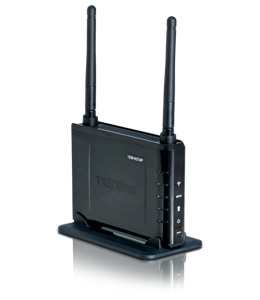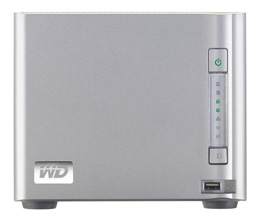How To Build an Affordable Wi-Fi Network for Your Small Business
Good news: your business is expanding. Though it initially consisted of three people working from their homes, your company now has 15 employees sharing 5,000 square feet of office space. To keep them connected, you could spend thousands hiring an IT consultant and a construction crew to string Ethernet cables through the ceiling and floorboards, or you could set up a simple wireless network using your own tech savvy and some inexpensive equipment. Better still, your employees will be able to share printers, files, and an Internet connection without being chained to their desks.
Choosing an Internet Connection
The first thing an office network requires is an Internet connection. You’ll need to do your homework and find out what providers offer broadband service in your building, as well as their different plan options. In some cases, you may have only one provider available. In others, you may be able to choose between DSL, cable, fiber optic, and T1-based Internet providers. Though T1 lines typically provide better upload speeds, the technology you choose isn’t as important as the amount of bandwidth your ISP guarantees, and the level of service it provides.
Purchase bandwidth based on your employees’ job functions and work habits. If they primarily use e-mail and surf the web, then download speeds don’t need to be blazing. “I would say 100 Kbps per user or so,” said Ian Jelinek, manager of technology services at the Fund for the City of New York. With 30 users, that’s 3-Mbps downloads.” However, if you have employees who do a lot of work in the cloud or send large files, you’ll need to make sure upload speeds are equal or close to your download bandwidth. T1 lines, which are more expensive than cable or DSL, usually offer better upload speeds.
The Router: Your First Line of Sharing
The days of giant closets filled with wires and switches are over for small businesses (or at least they should be). While an enterprise-level business may have lots of separate switches, you can easily support more than 30 simultaneous users with a small business–class wireless router.
When choosing a router, look for one that uses 802.11n technology for maximum speed and range, has built-in firewall, and supports at least WPA encryption. In addition, ensure that the router allows enough virtual private network (VPN) connections so that all your employees can access network resources from the road. An affordable choice for small offices is the Cisco RV 120W ($139; www.cisco.com), which has 802.11n, an SP1 firewall, and support for up to 10 simultaneous VPN connections, and 1,000 concurrent sessions or data requests.
Sign up to receive The Snapshot, a free special dispatch from Laptop Mag, in your inbox.
Place the router right next to your Internet line so you can connect it directly. Next you’ll want to set up network encryption, using the highest possible standard. If your notebooks were purchased in the last few years, they probably all support 128-bit WPA2 with AES encryption, the best common standard.
Forgo the temptation to leave your wireless network unsecured, as hackers or your neighbors could steal bandwidth and your most sensitive data. Avoid the outdated WEP encryption, which is almost as bad as having no security at all. “I wish WEP was no longer even an option,” said Joe Melfi, D-Link’s associate director of business solutions. “It’s still put into a lot of products for backward compatibility. Because it’s easier to configure, people will turn on WEP, it takes a nanosecond to break it. There are programs out there that will do that in a heartbeat.”
Use a strong password of at least seven characters with mixed-case letters and numbers; utilize special characters if possible. If you set a single English-language word as a password, you will be vulnerable to dictionary attacks, where a hacker uses a program that feeds in words from the dictionary as passwords over and over again until he gains access to your network.
To keep employees from mistaking your network for another one in the building, change the router’s SSID to something memorable. Nothing screams amateur hour more than a router broadcasting the name “D-Link” or “Linksys.”
Testing and Expanding Your Signal
Unless your office consists of a single tiny room, you will probably have a few dead spots. Test your connectivity by walking around the office with a laptop, stopping in several locations, looking at the number of bars, and attempting to surf the web from those spots. You can also use the utility Netperf (free; www.netperf.org) to get an exact throughput rate between your test notebook and another connected directly to the router. If you have fewer than three bars in an important location, you can’t hold a connection from that area, or you just need better throughput, there are several things you can do to improve signal strength.
Perhaps the best option is to purchase wireless access points such as the D-Link DAP-1522 ($54.99; www.dlink.com) or the TrendNet TEW-637AP ($43.99; www.trendnet.com) and strategically place them in areas of the office that have weak or no signal coverage. To connect wireless access points back to the router, you can use a powerline networking kit such as the TrendNet TPL-303E2K ($79.99) or the Netgear XAVB101-100NAS ($105; www.netgear.com), which allows you to send data over the office’s electrical system, rather than stringing Ethernet cable. You can even connect a wired switch to a powerline module, so a group of users who need even better connectivity can plug into the network via Ethernet.
A wireless network extender could help as well, but it might not be worth the cost savings. Rather than connecting to the network via a powerline or Ethernet wire, extenders simply catch the existing Wi-Fi signal and rebroadcast it. You need to place an extender in a location that is close to the weak zone you’re targeting but still within an area where the signal is strong. However, because they connect to the router wirelessly, and because these devices transmit and receive signals simultaneously, wireless extenders don’t provide as much throughput as wireless access points. “Half the time it receives, and half the time it transmits,” said D-Link’s Melfi. “You’re still better off [than having nothing], but the side effect is that your overall throughput is a little slower.”
Printer Sharing
When it comes to sharing printers, there are two primary choices. You can buy a networked printer, or you can attach a wireless print server to an existing printer. If you’re buying a new printer, you’ll be better off with a networked model, because setup is easier and you won’t have to deal with possible compatibility issues between the printer and print server.
You can purchase a printer that has wireless or wired networking capabilities. Considering the amount of data being transferred to a business printer, you might be better off with an Ethernet printer, such as the HP LaserJet P3015n ($599; www.hp.com), which prints up to 42 pages per minute. If your printer has Ethernet you’ll need to place it either right next to the router or near a powerline networking port.
For existing printers that don’t offer built-in networking support, or if you want to buy a non-networked printer, you can purchase a wireless print server for less than $100. The ASUS WL-500GB ($64.99; usa.asus.com) supports up to two printers at once, while the TrendNet TEW-P1UG ($68.99) works only with a single printer. Whatever print server you choose, check to make sure that it supports the specific make and model of your printer. “They typically have a list of compatible printers since part of the driver has to run in the device,” said Melfi. “So you always have to find out: is the printer that you have on the compatibility list for that product?”
If you really want to save money on a print server and have an unused Windows computer lying around, you can attach that desktop to your printer and use Windows’ print sharing to make it available to the rest of the office. However, you may be wasting a perfectly good computer and using up more electricity than necessary to keep it on all the time.
Network Attached Storage
Perhaps the most important resource you can share with your coworkers is a storage drive. Fortunately, you don’t need a network certification and a giant, expensive file server to share files on your network. A network attached storage (NAS) device makes it easy to give your employees a ton of space while maintaining strict control over security and permissions. “The intelligence in the NAS is what you would expect out of a file server,” Melfi said.
With a four-bay NAS such as the Synology DiskStation DS410 ($499; www.synology.com), you can install up to four 3.5-inch desktop hard drives of up to 2TB each ($110 and up) for a total of 8TB of storage. Other NAS stations, such as the Western Digital ShareSpace ($499 for 4TB; www.wdc.com), come with drives preinstalled. You can also use RAID technology to mirror your drives and protect precious data in the event that one disk fails. If your storage needs are modest, you can save money by purchasing a two-bay NAS, but a four-bay solution gives you the most room to grow.
You’ll want the NAS to use a wired connection, so place it near a wired port next to your router. Setting up permissions is easy. Using the device’s control panel, you can create a list of user accounts and groups. Then you can assign access rights to each individual or to groups.
When it comes to cross-platform compatibility, any NAS worth its salt should support both Windows and Mac-based networking standards. Many NAS devices even double as web servers for your corporate intranet.
Network Cameras
Security cameras are another resource many small businesses want to share over the network. When it comes to choosing a camera, you need to decide whether you need to pan, tilt, and zoom remotely with something like the Cisco WVC210 ($219; www.cisco.com). An inexpensive fixed-view unit like the Zonet ZVC7630W ($149; www.zonetusa.com) may also do the job. Look at the resolution of the camera and the compression it offers; you’ll want at least VGA resolution (640 x 480 pixels) in order to see fine details. Also, getting a camera that offers H.264 as opposed to simple MPEG-4 compression will allow for smoother images.
Verdict
For well under $2,000, you can set up a wireless network for more than 30 employees working in a mid-size office space that allows them to share an Internet connection, files, printers, and even security cameras. Even better, you can do so without hiring an expensive IT consultant or someone to drill holes in the walls, floor, and ceiling. All that’s really required is a little know-how and some time to set things up.





